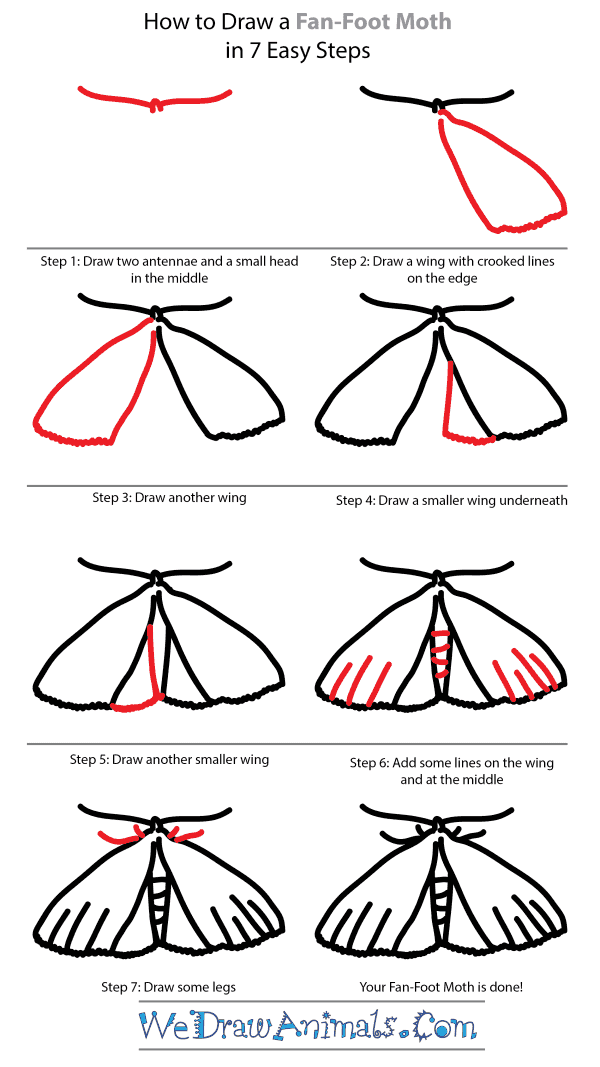In this quick tutorial you'll learn how to draw a Fan Foot Moth in 7 easy steps - great for kids and novice artists.
The images above represent how your finished drawing is going to look and the steps involved.
Below are the individual steps - you can click on each one for a High Resolution printable PDF version.
At the bottom you can read some interesting facts about the Fan Foot Moth.
Make sure you also check out any of the hundreds of drawing tutorials grouped by category.
How to Draw a Fan Foot Moth - Step-by-Step Tutorial
Step 1: Draw a small triangle, then draw a long line on either side. This will be the head and antennae
Step 2: Draw the right wing. Make your lines crooked on the edge to make it look realistic
Step 3: Repeat the same with the left wing
Step 4: Draw a small wing underneath the right wing, again, make the edge crooked
Step 5: Repeat on the left side with the smaller wing
Step 6: Add lining detail on the main wings and the middle (body)
Step 7: Draw two legs on either side by the head.
Interesting Facts about the Fan-Foot Moth
This moth has a distinct look compared to other species of moth, with its pale white and grey wings that are marked with three darker, horizontal lines across. Even the caterpillar forms of these moths are quite obvious on their own, with black bodies and bright orange coloring that becomes brighter the older the caterpillar becomes. They retain their caterpillar form from July until April, and feed on leaves from their environment. Moths fly late at night in the months starting in late May to early July. If you ever want to bring this moth around a certain area, snapping small twigs in trees and leaving them hanging to wilt will attract them as it makes a perfect home for the caterpillars. They used to be a very common and widespread species of moth, occurring all over Europe, but now there are few areas where they have a large population of any significance.
Did you know?
- Though the numbers of this species seem to quite visibly be diminishing, the fan-footed moth is not considered endangered or vulnerable to endangerment as of yet.
- They prefer to inhabit oak woodlands with clay or sandy soil.
- Humid areas are their preferred environment as well.
- Variations in climate can be disastrous to the population of the fan-footed moth. Human intervention in their natural habitat has also been associated with their decreasing numbers.
- There is a plan set forth by UK authorities to try and bolster the population of the moth by as much as five stable populations by creating suitable environments where they will desire to go.
There is not an exceptional amount of knowledge known about this species of moth, but researchers are doing what they can to further understand it. The purpose of this is to learn how to better manage habitats to attract this species.








